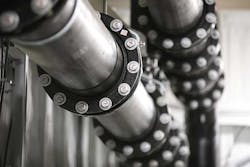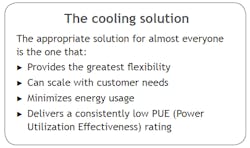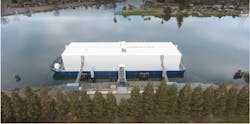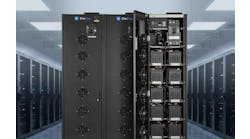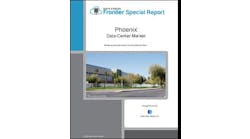Being a Good Neighbor Means Considering Community Impact During Site Selection
This week we conclude our article series on the role that sustainability should play in the development and deployment of data centers by exploring how a sustainability focus will impact your choices around cooling and environmental impact. We also outline the importance of evaluating the community impact of your new data center.
Get the full report
Cooling technologies
If we were going to look at only a single aspect of sustainable data center site selection, it would be cooling. While it would be great if all data centers could be in Iceland or somewhere near the Arctic Circle and cooling just involved opening the windows the correct amount, the reality is that data centers end up in all environments, and keeping them at the appropriate temperature is a considerable energy and money sink.
The traditional cooling methodology for data centers, the use of chillers, is logically moving to end of life. It simply isn’t sufficiently efficient to continue to scale or to be environmentally neutral. And since free-air cooling is geographically limited, the next logical phase for data center environmental control is liquid cooling.
Becoming more energy efficient isn’t the solution if you are taking potable water away from already water-restricted communities. This is where Nautilus’ sustainability focus has allowed them to deploy data centers that use the most technologically advanced water-based cooling system available.
Liquid cooling comes in several flavors, from immersive cooling in mineral oil or specialized fluids to natural water cooling, the key point being that water can be 1000 times more effective at transporting the heat generated by the IT workload than air-cooling. Making use of liquid cooling is the direction that the industry is trending towards while learning to understand that having water in your data center isn’t automatically a bad thing. Not all liquid cooling is equal; focusing on micro issues, such as cooling at the system or rack level, you have a different perspective than when contemplating using a water-cooled data center model. While both perspectives take advantage of the ability of water to transport heat, the overall approach differs in selection and application. Solutions range from the micro, such as CPU cooling options, to the macro, cooling entire racks and data centers.
This means that when selecting your data center site, you need to factor water availability into the mix. Given the importance of cooling and the future of sustainable data centers, it might be the most important concern in site selection.
Don’t underestimate the need to be able to scale effectively. Look back fifteen to twenty years; at that point in time, the largest data centers in the world were under 10 megawatts. The largest data centers today consume as much as 300 times more energy. And as power densities get higher, virtualization gets more efficient, and technologies such as supercomputing and high performance computing become more commonplace in the business world. Your data center and its cooling needs to be able to scale effectively for your business to take advantage of these changes.
Second, you need to minimize the impact on available water supplies. Becoming more energy efficient isn’t the solution if you are taking potable water away from already water-restricted communities. This is where Nautilus’ sustainability focus has allowed them to deploy data centers that use the most technologically advanced water-based cooling system available.
Environmental impact
Many locations already have areas set aside for data center operations and deployments. In some cases, these are economic zones with carve-outs for building data centers; in other areas, they are brownfield sites that need to be repurposed, and the nature of data center facilities being logical choices to make use of the spaces. In many cases, they have been established to avoid any NIMBY response from local governments or residents.
Consider that you want a new data center to be a good neighbor. Your site selection should focus on minimizing the impact of the data center on everything from the power infrastructure to groundwater usage to noise. Every site will have its unique advantages and disadvantages. Still, within the conditions your business needs to establish for the facility, there will always be ways to keep sustainable site selection a high priority.
This means you must look at how sustainable your operations will be over the projected life of the facility. What do the population trends look like? Are you still able to be a good neighbor five years down the road? What can you do now to future-proof the impact of the data center on the local area by selecting a specific site?
Each item that impacts the site’s sustainability needs to be considered on its own and as part of a holistic overview of the entire project. Look at data center trends for some guidance. If features such as renewable energy figure prominently, what are the plans of the utility providers? If you want to move toward a liquid-cooled infrastructure, how is water availability as a specific site selection criterion? If you plan on reusing waste heat, how will this be sustainable in the future?
Long-term prospects
Your data center is a long-term investment, even if you are looking at colocation. So, sustainability isn’t just a good idea or the latest buzzword. For example, suppose you have chosen state-of-the-art water cooling in a data center that can scale to meet your business needs. In that case, you are already positioning yourself as rack densities increase and technologies demand greater flexibility in data center placement and operations. As hyperscale data centers move further away from the customers they serve to meet their specific needs for space, the ability to drop a data center right in town, with the densest population, where you need to be able to serve the customer, provides a significant level of flexibility for expansion and business growth.
Nautilus’ Stockton facility.
Evaluating community impact
Like it or not, your data center will be part of a community. And you need to take the needs and concerns of that community into account when selecting your data center site. Even though a traditional data center can easily be disguised as an office building, warehouse, or your everyday, low-impact industrial park business, the impact on an existing neighborhood can’t be understated. Power and connectivity requirements can bring local benefits but engaging with the community and building a sustainable relationship with the local area must be a consideration in the selection of a sustainable site for the data center.
NIMBY issues
Engaging with the local community is fundamentally the only way to address the problem of Not In My Back Yard (NIMBY) issues. News coverage of new data center projects rarely focuses on positives beyond touting new jobs and long-term tax revenues. They usually don’t touch on neighborhood concerns like potential environmental damage, noise, or even the sudden appearance of large, boxy buildings where there was once an untouched vista of farmland. The lack of effort with the community can even cause projects to be canceled outright.
Minimizing community impact
The simplest way to minimize community impact is, as has been stated earlier, to place your data center in the part of town where there is already an existing base of industrial buildings. When you place your data center in that part of town, you’ll know that a lot of the infrastructure you would need to add, and require a community to pay for, is already in place. Other industries in the area are comfortable with adding a data center; perhaps most importantly, the community isn’t being asked to make special accommodations for the data center facility.
In many cases, you can place a data center like a Nautilus data center in brownfield areas or in other areas that are not suitable for anything other than industrial use because of the self-contained nature of the model. In this way, you bring a positive economic impact to the area without the baggage that traditional data center construction often brings, “Hey, you’re taking up too much space, you’re chewing up too much energy. We don’t like these things in our backyard.” The industry needs to acknowledge these concerns and make the changes necessary to the data center site selection model to alleviate community concerns. The data center deployment model offered by Nautilus gives communities that lack available land sites, due to cost or simply availability, an option that may have never been considered.
With Nautilus, site selection is simplified. Only needing access to a large body of water, which is available to every significant community worldwide, means the digital infrastructure can be available to every single community around the world. The site selection becomes simpler because society has already identified those locations for its other critical infrastructure. Communities are not just content but welcoming of the addition of clean digital infrastructure to convert those brownfields back to greenfields.
Maximizing community opportunity & long-term benefits
In many communities with a formerly industrial solid presence, there has been a decline in those types of facilities and a certain malaise in repurposing those areas. There are a limited number of businesses successfully operating in former heavy industry areas, and as experience has shown, when those industries left, so did most of the smaller businesses providing supporting services.
The data center industry can reverse that process. By selecting sites that have been the victim of the benign neglect often found in those former industrial areas, the data center becomes the primary driver of deploying a strong digital infrastructure other businesses can piggyback on. When significant network access, power availability, and skilled workforce return to these areas, many of which are defined as Economic Opportunity Zones, businesses can see significant benefits in placing their new locations, startups, and even the newest buildings for existing buildings enterprises, in close proximity. This community revitalization can bring additional economic opportunity, greater tax revenue, and a flowering of new business opportunity.
Download the entire paper, “Sustainability in Data Center Site Selection“ courtesy of Nautilus Data Technologies, for exclusive content on the impact of a sustainable site on implementing a sustainable data center.

